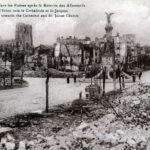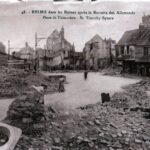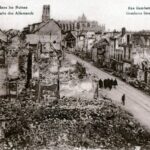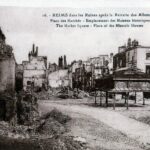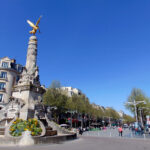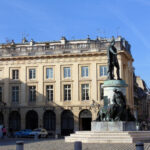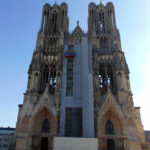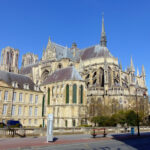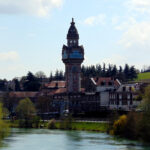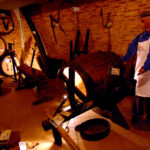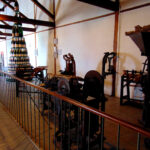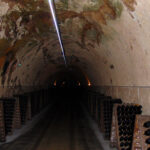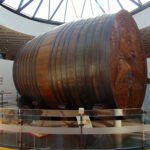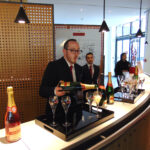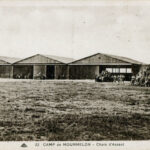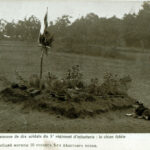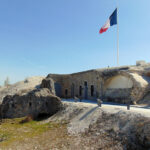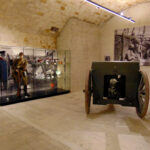Champagne travel guide in English with the tips.
The main sights, palaces, cathedrals, castles, fortresses, champagne cellars, what interesting things can be seen in one day or in two or three days by car. Prepared by the personal experience, reference books, archival documents and old photographic cards.
Champagne travel guide: museums, wine cellars, WW1-2 battlefields
Champagne (France) is a historical region of the country, the famous for its wine-making traditions, but not only for that. It is here that sparkling wine is real Champagne, and everything else is just an attempt to make something similar. There are many ancient castles, abbeys, churches. Reims traditionally crowned the rulers of France. Excursions to Champagne are thousands of roads to travel again and again. Our author’s guide will help you choose the right route and the most interesting things to see.
– Reims
– Epernay and Champagne Houses, the Cellars and the Wine museums
Reims is the largest city in the Champagne-Ardenne region. In the south and east, mountains adjoin it, famous for their vineyards for the production of champagne. Reims is also called the “City of Coronations” or “City of Kings”. Where the Reims Cathedral was erected, even the Apostle of the Franks Saint Remigius baptized King Clovis I, and where subsequently, for more than 10 centuries, many kings of France were crowned, starting with Louis I the Pious in 816 and up to Charles X in 1825. In addition to the cathedral, important Art Deco façades are considered heritage. It is also famous for a variety of cultural events and is included in the national list of Cities of Art and History, on its territory there are four sites that UNESCO has included in the List of World Heritage Sites.
Sparkling wine, the method of production of which was discovered in the Middle Ages, is a traditional advantage of the region’s economy. Reims is located at the western border of the region of limestone soils, on a plain, on the right bank of the Vel river (a tributary of the Aisne). Along with this, it is also very advantageously located at the edge of the Paris Basin, at the intersection of the main transport routes Paris-Strasbourg and the North Sea-Mediterranean Sea, while in close proximity to Germany, Belgium and Luxembourg.
World War I. The outskirts of Reims are known as the main battlefields of the Western Front, where Russian soldiers of the expeditionary force also took part. Propaganda postcards of the atrocities of the Germans, the ruins photo series.
- Cathedral and St. James Church
- St. Timothy square ruins
- Gambette street
- Market and historical houses
The Second World War. Place of signing of the act of unconditional surrender of Germany to the Allied forces on May 7, 1945 by General Jodl, but…
The main attractions that you can see in one day.
The whole center is a big, main and beautiful attraction 🙂. It is worth walking along the central streets from the railway station through the squares to the famous Cathedral. A short guide, diagram and photo, as well as the Bishop’s palace adjoining it.
- Reims “food street” and the famous monument
- central royal square
Reims Cathedral (Notre-Dame de Reims), 1210-1515, architects Jean d’Orbais, Jean-le-Loup, Gaucher de Reims, Bernard of Soissons ( Bernard de Soissons). It is here that almost all French kings have traditionally been crowned since 816. The structure was partially destroyed during the two world wars (including a number of stained glass windows were lost and replaced by works by Chagall). Included in the UNESCO World Heritage List.
- Front of the cathedral before restoration (archive 2015)
- the other side of the cathedral and the palace
Automobile Museum in Reims. On the outskirts is the world’s largest collection of cars, where a huge number of collectible retro models of vehicles moving on wheels are presented to the public. Rare specimens are especially noteworthy. The first cars of the beginning of the 20th century, the world-famous Renault, Peugeot, Ford, lesser-known models of the Berliet company are the main automobile company of the French army. Cars of the 20-30s, on which Russian officers worked as taxi drivers in Paris. Motorcycles, special equipment and a lot of interesting things. Mainly French brands such as Peugeot, Renault and Citroen are represented. More about collection.
- Automobile Museum Reims-Champagne
Epernay – Capital of Champagne
Wine Testing tour in Epernay – this is, of course, a visit to the cellars of the famous champagne “Dom Perignon” or another of your choice. Winemaking museums, tasting rooms, restaurants.. Most of our tourists visit this region solely for the sake of getting acquainted with winemaking and wine tasting in a purely “Russian style” (this is when the next day it is impossible to remember the types of wines, to put it mildly).
- Epernay is the Champagne Capital of the World
- Making wine barrels
- Capping in the bottles, types of the bottles
- Cellars with bottles of champagne
- tasting of Castellane champagne
- Mercier Giant barrel
- Sommelier and tasting of different varieties
There are many historical places in Champagne – battlefields, forts, museums, memorials, cemeteries and even military-historical restaurants.
WW1 – WW2 battlefields and attractions
Below we place some photos of our own collection of the memorable places in Chanpagne.
- Mourmelon, WW1 tank* base/ camp
- The grave of soldiers and faithful dog
When the Russian Imperial Army was still an ally of France, the USA and the Entente. Before the takeover of Russia by the Bolsheviks and the Soviet Gestapo (NKVD-KGB)
Russian soldiers fought for the province of Champagne.
For national history, for Russian patriots, veterans of the Armed Forces, officials, heads of administrations and specialized committees, for Orthodox, Cossack, cadet and youth organizations, Champagne is a place of Russian Glory. The soldiers of the special regiments of the Russian Expeditionary Corps and the Legion of Honor immortalized themselves here with glory and remained forever lying on a foreign land next to the allies in the Great War.
Fort de la Pompelle
The fortress (fort) Pompelle was built from 1880 to 1883 as part of the defensive ring of fortifications of the Reims fortified area after the war of 1870 according to the project of General Seret de Riviere. It was classified as a historical monument on March 23, 1922. An interesting fact. Having the status of an auxiliary defensive structure, the fortress served to support the main fortification strongholds of the fortified area, primarily the forts of Vitry, Nozhen-Abbatisse, Berry, Brimont, Saint-Thierry, Fresnes and Montbray.
Fort Pompelle and the First World War. The fortress, disarmed after 1913, was occupied by German troops on September 4, 1914 without a fight. On September 24, after the victory on the Marne, as a result of bloody battles, it was again conquered by the 138th infantry regiment, since that time becoming the main link in the defense of the front line of this Champagne region. For more than 4 years, the German army made attempts to capture the fortress: assault by infantry, intensive artillery and mortar shelling, gas poisoning, air bombardments and even tank attacks. Alternately, 180 regiments participated in the defense of the Fortress, among them the regiments of two Russian special brigades, sent by Emperor Nicholas II in 1916 and 1917.
– Fort Pompelle The history, collection and Guide Book
- Fort de la Pompelle
- Russian brigades (museum inside the fort)
Sightseeing, champagne tasting, battlefield tours
- Private sightseeing tours to Champagne for one day from Paris or Charles de Gaulle airport (Disneyland)
- WW1 battlefield tours to Champagne / Verdun for 1-7 days
* You can see such tanks of the First World War at the Museum of Meaux on the way to Champagne – Verdun Citadel or in the Loire Valley (Samur). One Renault FT-17 tank is in the collection of the Army Museum (Les Invalides) in Paris.

